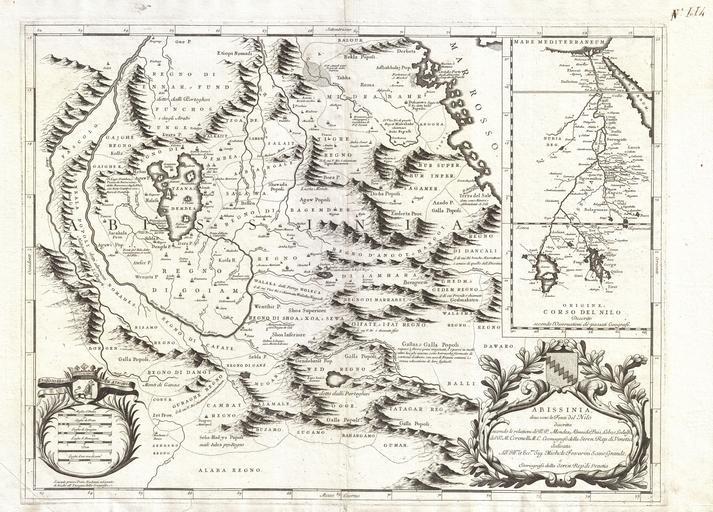MAKE A MEME
View Large Image

| View Original: | 1690_Coronelli_Map_of_Ethiopia,_Abyssinia,_and_the_Source_of_the_Blue_Nile_-_Geographicus_-_Abissinia-coronelli-1690.jpg (5000x3590) | |||
| Download: | Original | Medium | Small | Thumb |
| Courtesy of: | commons.wikimedia.org | More Like This | ||
| Keywords: 1690 Coronelli Map of Ethiopia, Abyssinia, and the Source of the Blue Nile - Geographicus - Abissinia-coronelli-1690.jpg This is Coronelli's important 1690 map of Ethiopia Abyssinia showing the source of the Blue Nile This map focusing on Lake Tana Tzana Dembea covers the Ethiopian highlands from Derbeta on the Red Sea south as far as the tribal kingdoms of Sugame Bahargamo and Gumar all of which are located in modern southern Ethiopia Europeans Coronelli included had a great interest in this region not only because of common conjecture regarding the source of the Nile but also as a potential site of the Kingdom of Prester John Though often underappreciated by historians this is a highly significant map in the development of African cartography and from the early 18th century on most cartographers followed its example with regard to this important region - one of the few parts of sub-Saharan Africa to be accurately represented on maps prior to the late 19th century Coronelli claims that this is the first map to accurately depict the sources of the Nile and at least as regards the Blue Nile we see no reason to dispute his claim The cartography here is based upon the travels of Portuguese Jesuits Manuel de Almeida Affonso Mendez Pedro Páez and Jerónimo Lobo who traveled throughout Abyssinia in the mid 16th century Coronelli correctly recognizes the importance of Lake Tana Tzana Dembea as well as the curious turn in the river that actually causes the Blue Nile to start it course as a southerly flowing river The actual fonts of the Nile itself appear to the southwest of Lake Tana The Falls of the Blue Nile now a popular tourist destination in Ethiopia are noted just south of the Lake In the upper right quadrant Coronelli contrasts his perspective on the region with the traditional Ptolemaic representation of the Nile River stemming from two great lakes south of the Equator Ironically both perspectives are somewhat correct Coronelli's representation of Abysinnia is highly accurate with regard to the course of the Blue Nile and its sources On the other hand along with the Ptolemaic theory Coronelli seems to ignore the entire White Nile which meanders into non-existence in the extreme left hand quadrants of the map The Ptolemaic perspective depicted on the upper right though it is based on speculative accounts dating to antiquity actually offers a fairly accurate representation of the White Nile's course northward from Lake Victoria which is in fact located just below the Equator Coronelli's map also offers much of interest beyond its intended purpose - that is to show the course of the Nile A number of the earliest Ethiopian towns cities monasteriesc and kingdoms many of which still exist are in evidence These include Axum Asmara Gojiam di Cafate Kaffa di Ganz di Dembea north of Lake Tana Tigre di Amhara welo Ifat Guraghe Damot Balli Dawaro Sugamo Sidamo Angot Bagemder and Midrabahr Bahrmedr among others Curiously the map does not name the early Abyssinian capital city of Gondar though the tent encampment of the King is roughly identified in the same location A decorative title cartouche appears on the lower right quadrant Another cartouche showing a no less than six distance scales adorns the lower left 1690 undated Size in 25 19 object history credit line accession number Abissinia-coronelli-1690 Coronelli V M <i>Atlante Veneto</i> 1690 Geographicus-source PD-old-100 Vincenzo Coronelli Old maps of Ethiopia 1690 maps Maps in Italian | ||||